Animals know before we do. And sometimes, their behavior gets weird.
Before earthquakes rumble or tsunamis roar, something stirs in the wild.
Dogs refuse to go outside.
Birds vanish from the sky.
Cows stampede for no reason at all.
These aren’t coincidences.
They’re warning signs wrapped in fur, feathers, and instinct.
While humans rely on apps and alerts, animals are tuned into something deeper—something ancient.
Their strange, sudden shifts can feel like superstition… until the ground starts shaking.
Want to know what to watch for when nature’s about to lose its temper?
These are the wild, spooky, and downright bizarre behaviors that just might save your life.
Dogs Howling at the Moon

With a haunting melody echoing through the night, dogs are known to howl incessantly right before a natural disaster. This behavior, often seen as eerie, is believed to be a response to sudden changes in atmospheric pressure. As the air becomes heavy, these loyal companions seem to sense an impending upheaval.
Their howling serves as a celestial warning, a cry to the moon that something is amiss. This instinctual reaction is both fascinating and mystifying, leaving us wondering about the deep connection between dogs and the natural world.
Next time you hear a dog howling, you might want to pay attention.
Birds Fleeing Their Nests
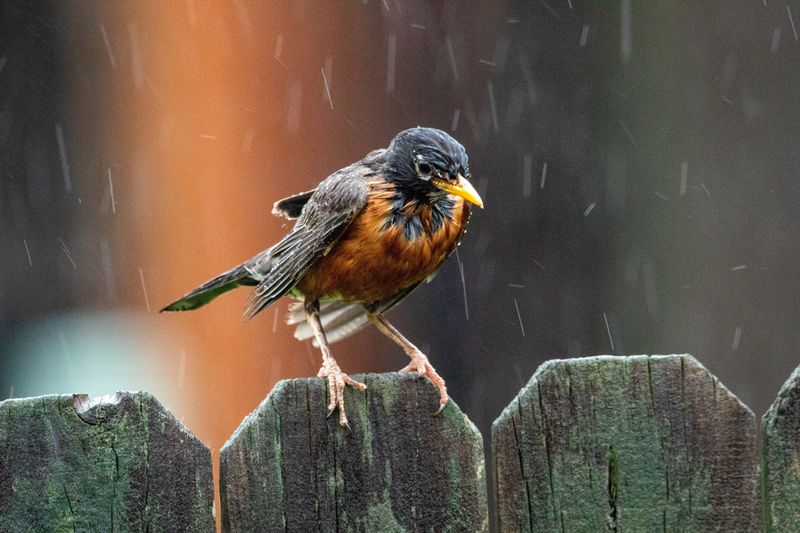
In a flurry of feathers, birds often abandon their nests and take flight just before a natural disaster strikes. This mass exodus is thought to be triggered by shifts in electromagnetic fields.
As the skies darken and winds pick up, these winged creatures seem to instinctively know it’s time to seek safer grounds. The sight of birds leaving their homes en masse is both startling and beautiful, a harmonious dance with nature’s rhythm.
Such behavior raises questions about the incredible sensory abilities of birds and their connection to Earth’s changes.
Cats Hiding in Unusual Places

Cats, with their mysterious and independent nature, often find peculiar spots to hide in when they sense an upcoming disaster. This behavior is believed to be their way of seeking safety from potential threats.
Whether it’s under a bed or inside a cupboard, these feline friends display a heightened sense of awareness. Their wide eyes and tense postures tell a story of apprehension.
Observing a cat’s unusual hiding spot might just be a clue that something significant is about to happen.
Elephants Trumpeting Loudly
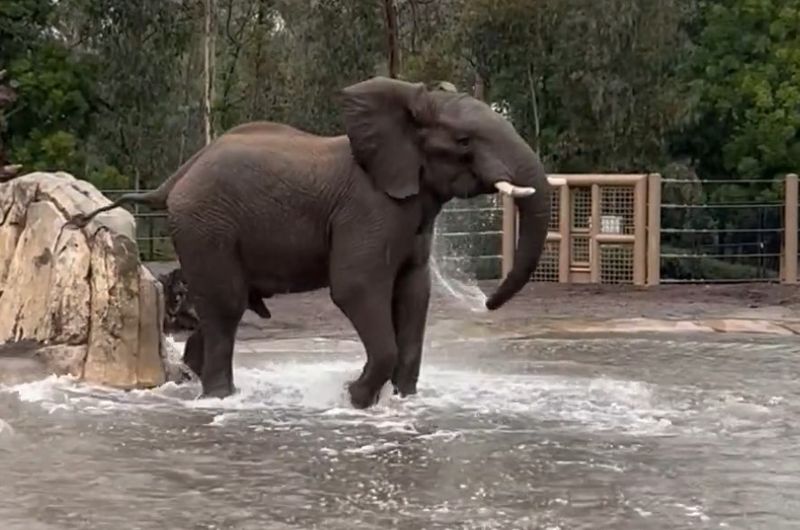
With trunks raised high and a symphony of trumpets, elephants often exhibit vocal outbursts before natural calamities. This behavior is attributed to their acute sensitivity to vibrations in the ground.
As they perceive distant rumbles, these gentle giants communicate warnings to their herd. The sound echoes across the savannah, a primal call to prepare for the unknown.
This remarkable display of communication and awareness showcases the elephants’ deep bond with their environment, making them formidable forecasters of nature’s fury.
Frogs Croaking More Frequently
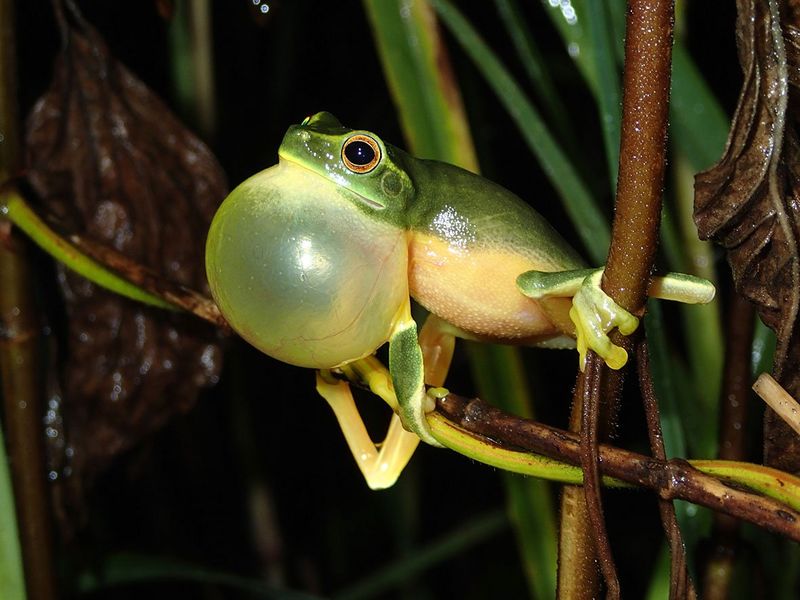
In the calm before a storm, frogs often begin croaking with increasing frequency. This chorus is thought to be a reaction to changes in humidity and air pressure.
As the atmosphere becomes charged, these amphibious creatures sense the shift and respond with their rhythmic calls. The air fills with their croaks, creating an eerie symphony that signals coming rain or storm.
This behavior offers insight into the frogs’ connection to their watery habitats and their ability to anticipate weather changes.
Rats Fleeing Urban Areas
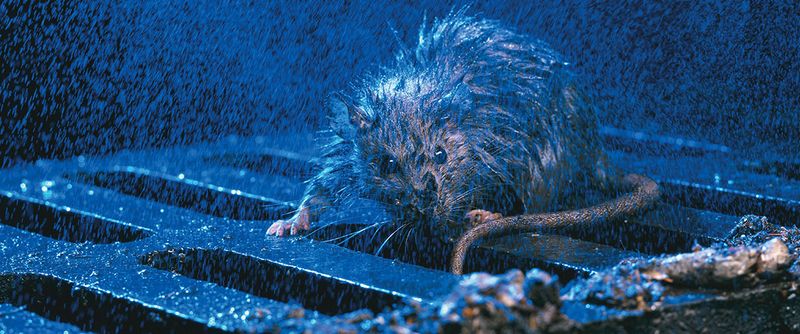
In bustling urban environments, rats are known to suddenly scatter in anticipation of a natural disaster. This mass migration is linked to their acute hearing and ability to detect ground vibrations.
As the city hums with life, these nocturnal creatures pick up on subtle cues that signal danger. Their exodus is a silent testament to their survival instincts.
Watching rats flee the city is a chilling reminder of nature’s unpredictable power and the hidden senses animals possess.
Snakes Emerging from Hiding

Slithering out from their secretive shelters, snakes often emerge before a natural disaster. This behavior is believed to be a response to temperature changes and vibrations in the ground.
As the earth trembles, these reptiles sense the imminent threat and move toward safer areas. Their sudden appearance is both alarming and intriguing.
Observing snakes on the move offers a glimpse into their primal instincts and their role as silent predictors of environmental shifts.
Cows Lying Down Together
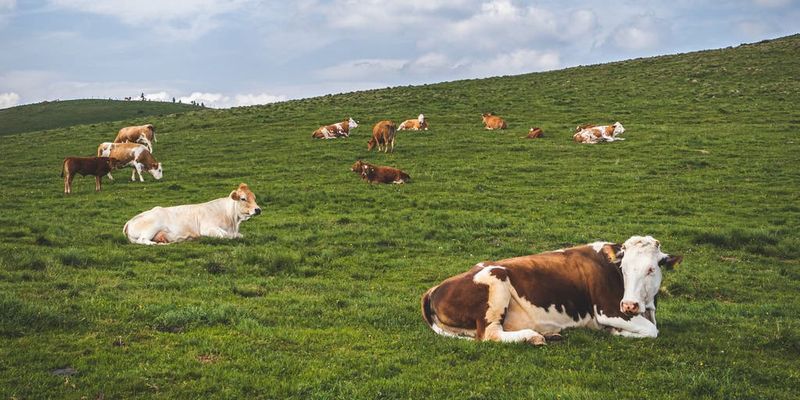
In the pastoral settings of the countryside, cows are often seen lying down together just before a storm. This behavior is thought to be a response to changes in air pressure and humidity.
As they sense the gathering storm, these gentle giants huddle for comfort, creating a serene and grounding image.
Their collective response to atmospheric changes is a charming display of herd instinct, raising fascinating questions about their ability to sense impending weather.
Fish Swimming Erratically
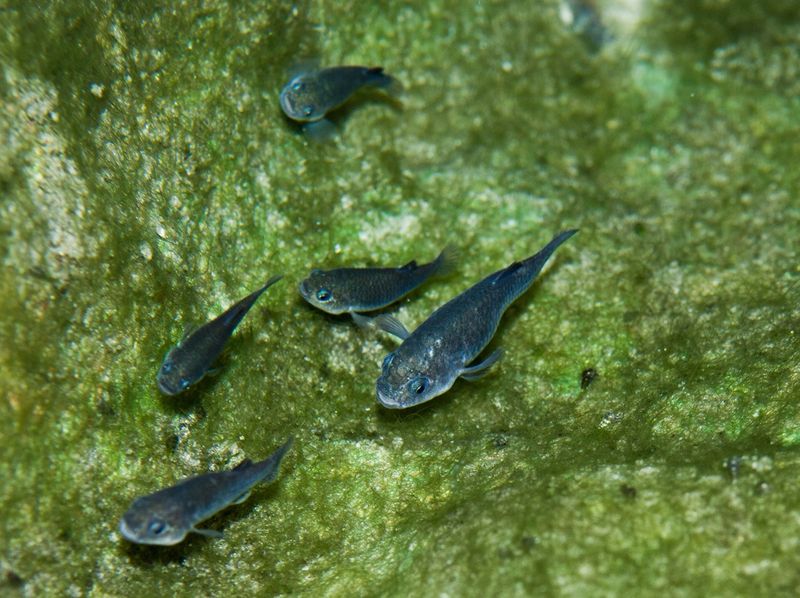
In the depths of the ocean, fish often exhibit erratic swimming patterns before an earthquake. This behavior is linked to their sensitivity to underwater vibrations and changes in water pressure.
As the sea floor shifts, these aquatic creatures react with restless movements, creating an underwater ballet of chaos.
Watching fish swim in such disarray offers a window into the mysterious forces at play beneath the waves and the fish’s innate connection to their watery world.
Turtles Leaving Beaches

With determined strides, turtles are known to leave beaches before tsunamis. This behavior is believed to be triggered by changes in ocean currents and vibrations.
As the sea becomes restless, these ancient mariners sense the danger and move inland, their shells gleaming under the threatening sky.
Their quiet exodus serves as a powerful reminder of nature’s signals and the turtles’ deep connection to the ocean’s rhythms.
Horses Acting Nervous
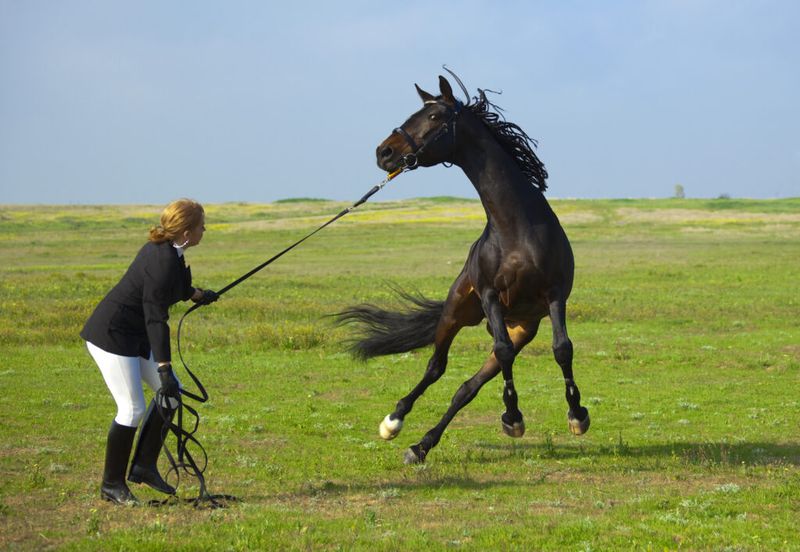
In wide-open fields, horses often display nervous behaviors before a natural disaster, such as pacing or snorting. This reaction is attributed to their heightened sense of hearing and smell.
As they pick up on distant thunder or shifts in the wind, these majestic animals become agitated, their muscles tense and ears alert.
Observing horses in such a state offers a window into their intuitive connection to the environment and their role as vigilant guardians of their domain.
Bees Staying Close to Hive
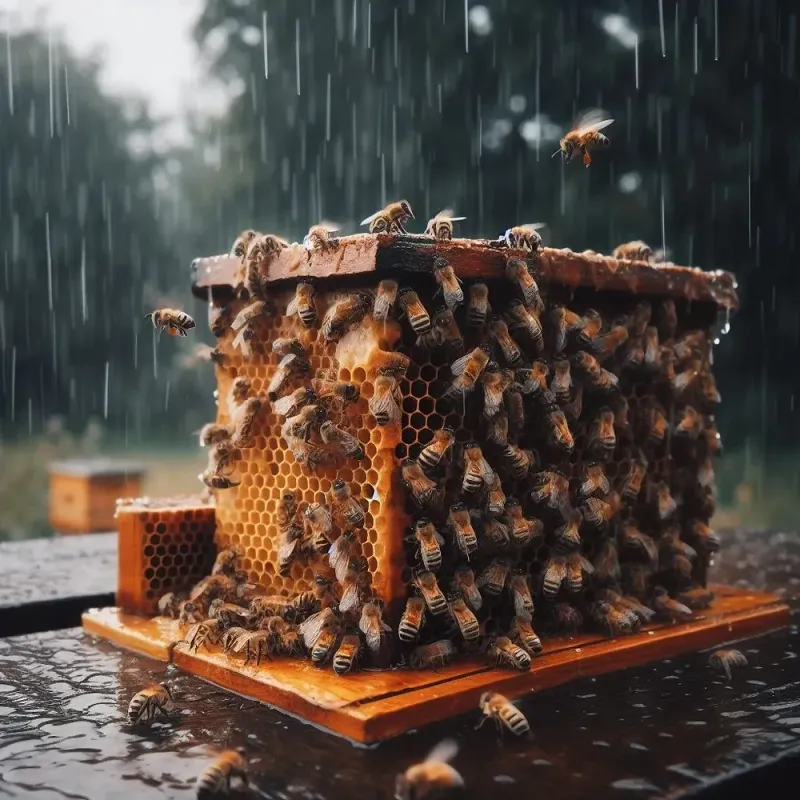
In the buzzing world of bees, staying close to the hive is a common behavior before a storm. This instinctual action is thought to protect the hive from potential damage.
As the air becomes charged, these industrious insects work tirelessly to secure their home, creating a hive of activity that defies the looming threat.
Their coordinated efforts showcase the bees’ resilience and their role as diligent stewards of nature’s balance.
Deer Gathering in Herds
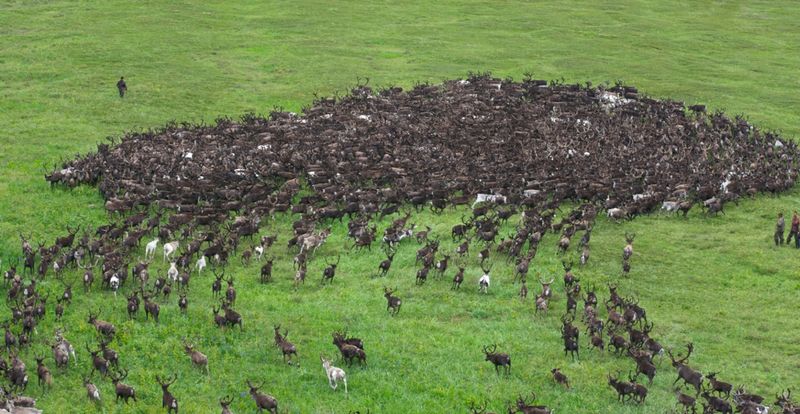
In forest glades, deer often gather in tight herds before natural disasters. This behavior is seen as a protective measure against the unknown.
As the winds rise and leaves rustle, these graceful creatures find solace in numbers, their eyes scanning the horizon for danger.
Their collective movement is a testament to the power of unity in the face of uncertainty, highlighting their instinctual wisdom and connection to the forest.
Ants Building Higher Mounds
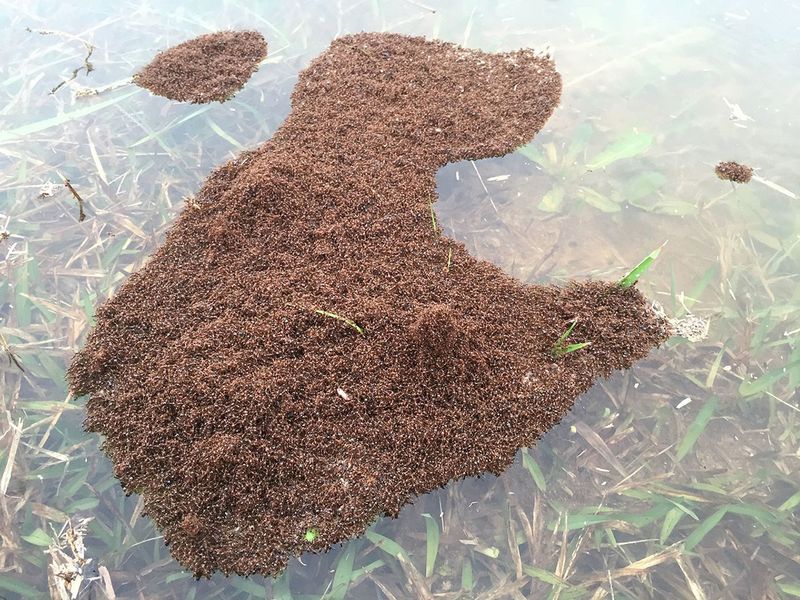
In the industrious world of ants, building higher mounds is a strategic move before heavy rains. This behavior is a response to rising soil moisture levels.
As the rain clouds gather, these tiny architects work feverishly to elevate their homes, ensuring survival against the impending deluge.
Their meticulous construction is a marvel of nature’s ingenuity, a testament to the ants’ foresight and adaptability.
Bats Flying Erratically
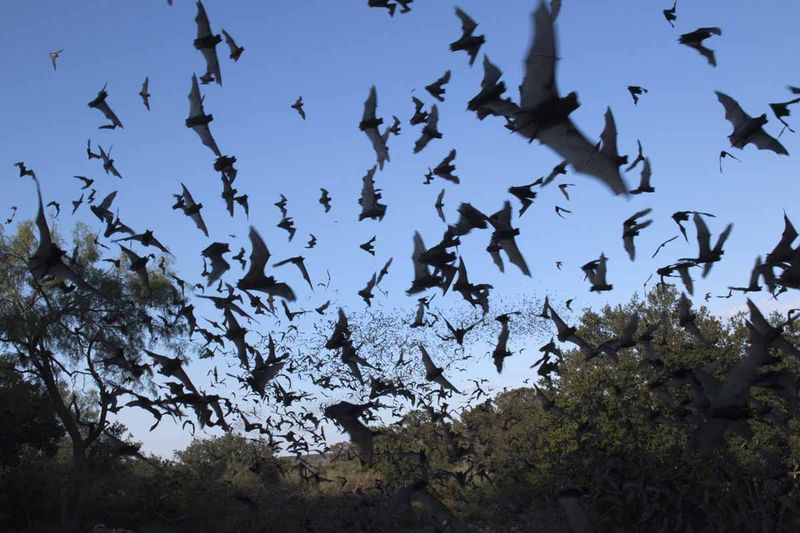
Under the cover of twilight, bats often fly erratically before storms, their flight paths weaving unpredictably. This behavior is linked to changes in atmospheric pressure and insect activity.
As the sky darkens, these nocturnal navigators react to the shifting environment, their wings cutting through the air with urgency.
The sight of bats in chaotic flight is both mesmerizing and ominous, a dance of survival against nature’s fury.

